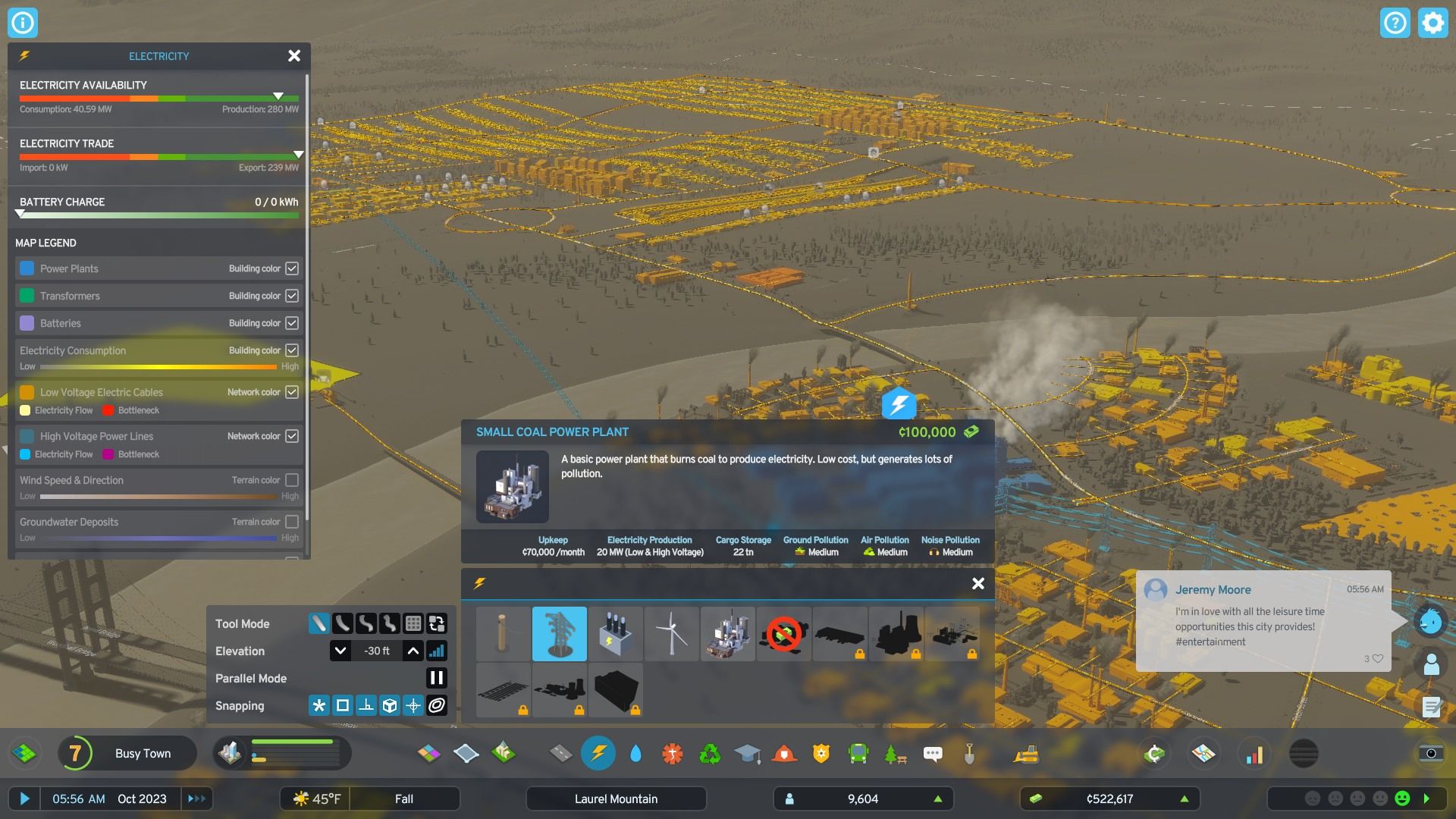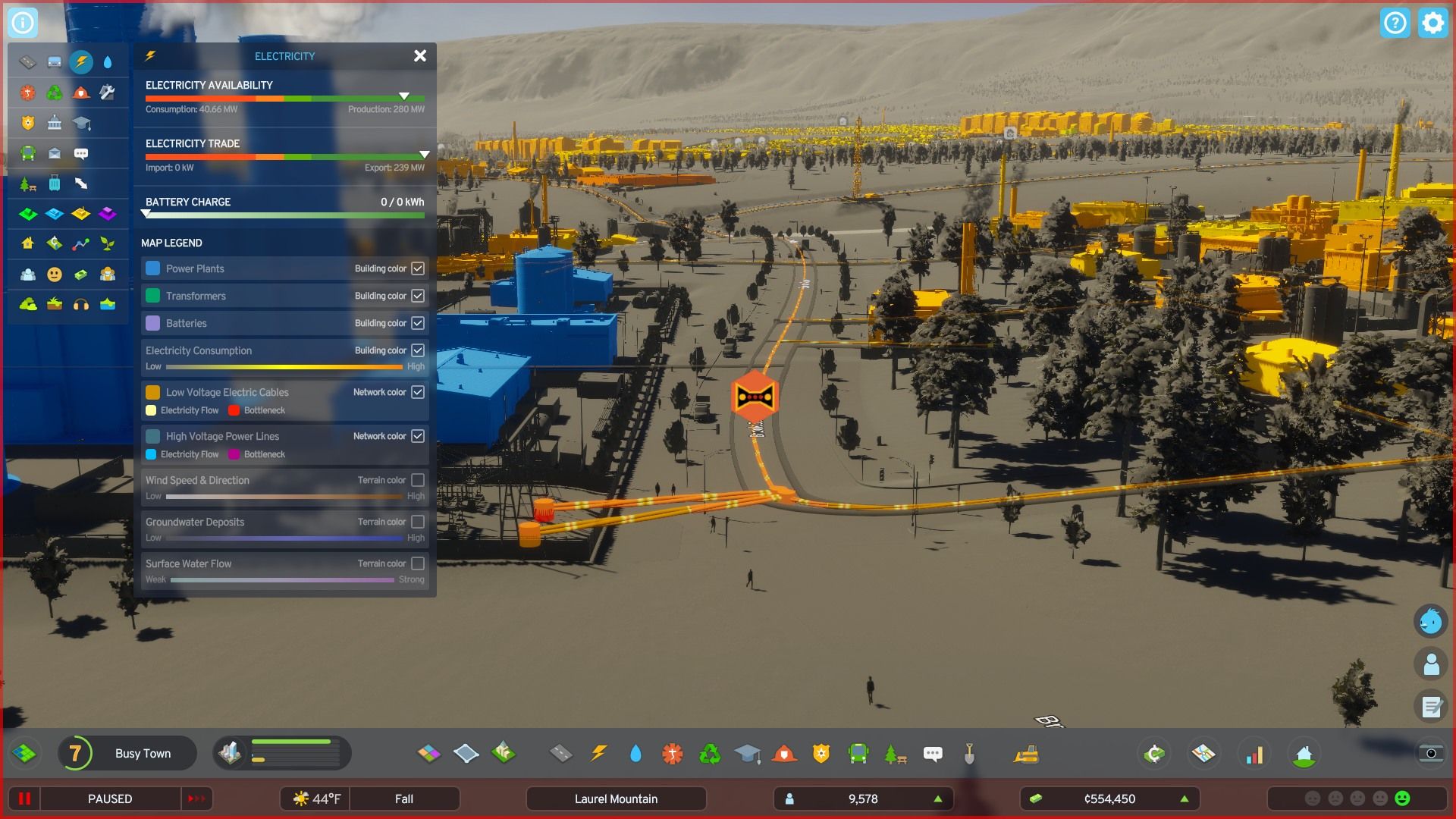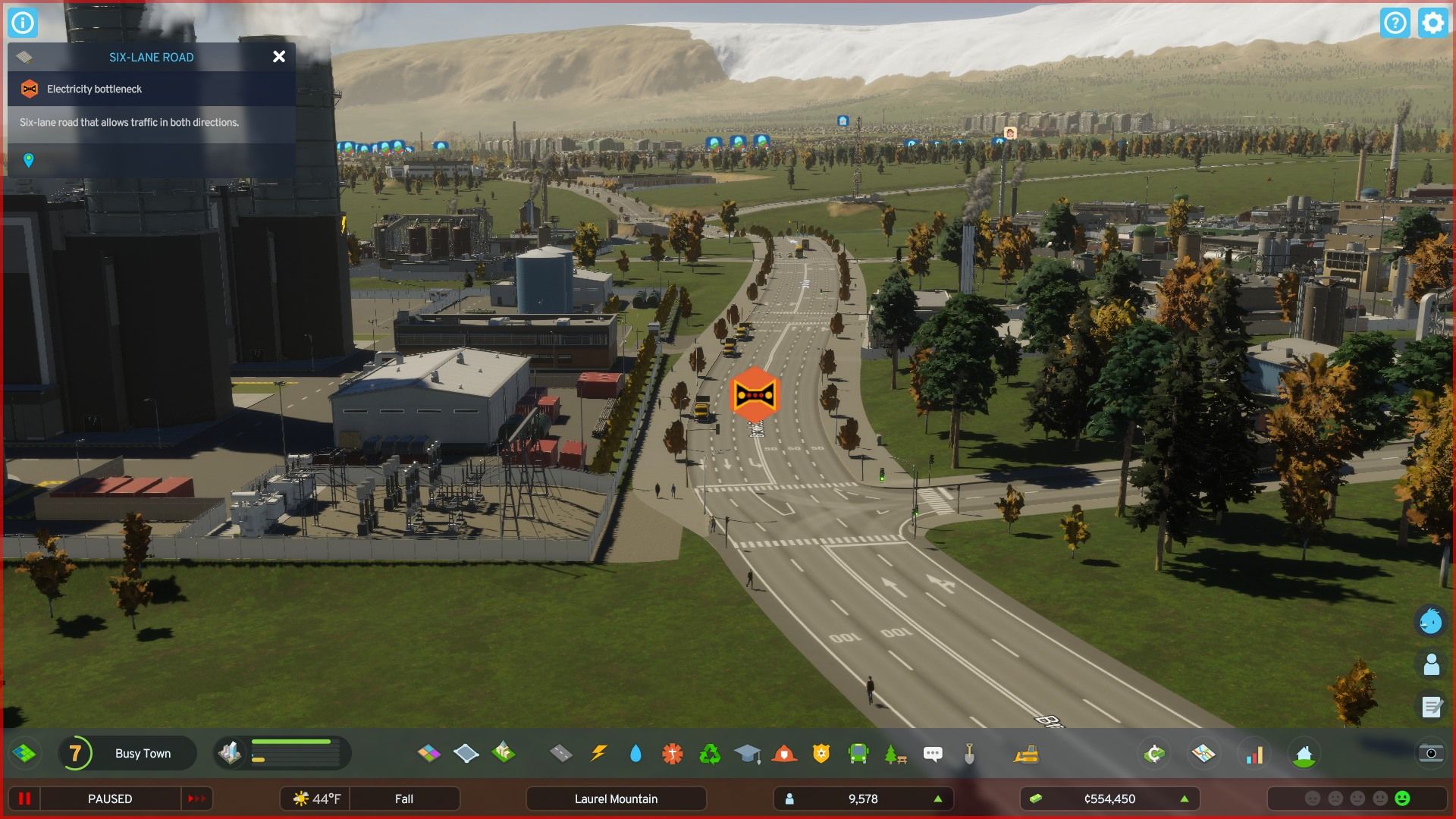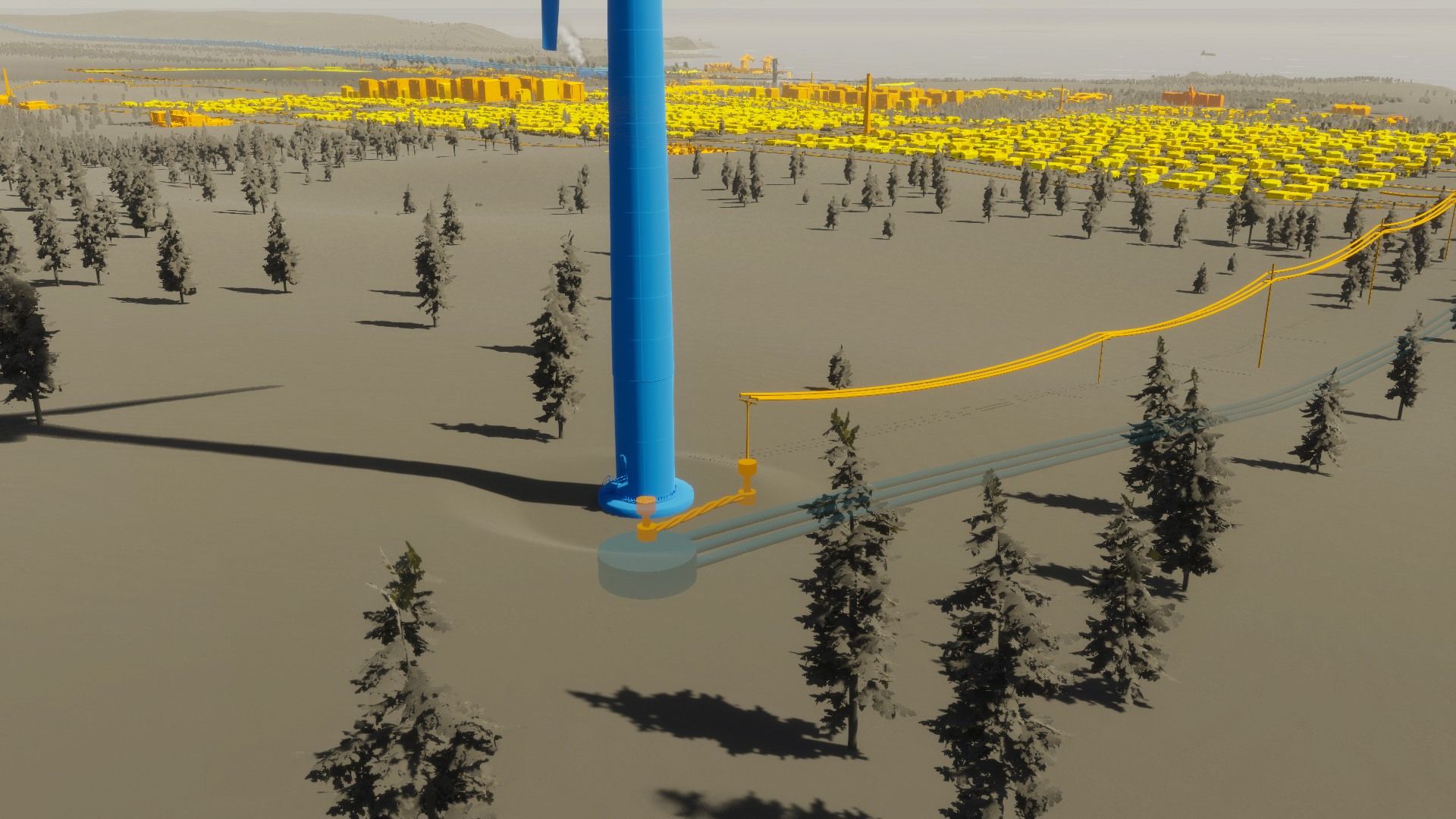
Mastering Power Grid Connections in Cities: Skylines 2

Learn how to optimize your power network in Cities: Skylines 2 Enhance your gameplay with expert tips on connecting power plants, transformers, and wind turbines efficiently, while avoiding common road bottlenecks Dominate the game with this comprehensive guide
Cities: Skylines 2 aims to replicate the process of building a contemporary city, with roads, water, and energy being crucial components. In order for a new city to attract inhabitants, a functional power network is essential. To assist players, the game provides an in-game tutorial on establishing a power network and linking high-voltage and low-voltage power lines. While this tutorial is informative, some players may still have queries regarding the complete power supply for their city.
Power Plants and Transformers
Players have the option to begin a new game without cheats and can select either a small coal plant or a set of wind turbines to generate electricity for their city. By using development points, players can unlock more environmentally friendly and efficient alternatives such as a natural gas power plant, solar farms, and nuclear energy.
Each power plant consists of two power nodes: a low-voltage node supplying power to the city, and a high-voltage node capable of connecting to other power plants, transformers, and external connections. In the Electricity info view, low-voltage connections are indicated by yellow and orange, while high-voltage connections (including power sources) are represented by the color blue.
Transformer stations are a specific type of structure that contain two power nodes, yet do not generate power themselves. These stations enable players to link the high-voltage external connections to the low-voltage lines below the streets, allowing for the importation of all power. However, this approach proves to be costlier in the long term when compared to local power generation. On the bright side, transformer stations are relatively inexpensive to maintain and only contribute minimally to noise pollution.
Roads and Bottlenecks
The process of establishing a power network has been made significantly simpler due to an added feature in the game. Unlike the original version, now almost every type of road comes equipped with an underground network of power, water, and sewage lines. Provided that a building is situated beside a road (which is a requirement for most buildings), it will automatically receive a low-voltage power supply from the adjacent road.
However, when power lines are overloaded with excessive energy usage, they create a bottleneck. In the example provided, there is a single road connecting the power plant to the entire city. This places too much demand on a single cable, resulting in certain areas of the city experiencing brownouts despite the power plant generating excess energy.
There are various methods to alleviate this bottleneck:
Construct a low-voltage electric cable extending from a road ahead of the congestion point to a road situated behind it, enabling multiple pathways for electricity distribution to all destinations.
In the scenario where the bottleneck lies directly in front of the power plant (as depicted in the image), establish a transformer in a different section of the city and establish a connection to the plant through a high-voltage power line.
Build an additional road connecting the power plant and the city, which can serve as an electric cable and potentially enhance the traffic conditions in the city. However, it is important to note that simply upgrading the roads will not be effective, as both wide and narrow roads transport an equal amount of energy, except for the highway.
Power, water, and sewage are provided by small, medium, and large roads, whereas highways are exclusively used for vehicles. This distinction is noticeable in the road construction menu, where three colored pipes are displayed beneath most regular roads, but not beneath any type of highway. By comparing the image above with the previous one, players can easily observe the absence of a power line beneath the highway.
To overcome this issue, there are a few options available. Firstly, players can construct electric cables that bridge the gaps caused by highways. Secondly, players can purchase the Advanced Road Services upgrade, which unlocks various improvements, such as streetlights. Highways with streetlights will transmit power throughout their length. However, it's important to note that this upgrade does not provide water and sewage services.
It is also worth mentioning that bottlenecks can occur with high-voltage lines. In such cases, players should consider adding more transformers and potentially increasing the number of external connections to the power network. To establish an external connection, players must acquire sufficient map tiles to reach the playable area's boundary. Then, they can construct a power line that connects with the edge. An arrow will appear above the power line to indicate a valid connection.
How to Connect Wind Turbines
Wind turbines have a distinct method of linking to the power grid. Unlike power plants and transformers, they do not require a high-voltage connection. The image above depicts a buried high-voltage power line beneath the turbine, but the game does not recognize this line as "connected." Instead, wind turbines solely produce low-voltage energy and necessitate a low-voltage connection.
Moreover, wind turbines require this connection to be underground. While electric cables can be connected to road networks by beginning nearby, the only way to establish a connection for a wind turbine is through the underground low-voltage node beneath its mast. Players can subsequently bring the electric cable above ground (as shown in the image), but the connection must initiate underground. To construct underground cables and power lines, players should reduce the elevation in the tool menu to a negative value.
When constructing wind farms, it is crucial to consider bottlenecks. Ensure the installation of a distinct electrical cable for every group of turbines and, whenever feasible, connect them to various sections of the road network.
Cities: Skylines 2 is now accessible on PC, PS5, and Xbox Series X/S.
Cities: Skylines 2
Platform(s) PC, PS5, Xbox Series X, Xbox Series SReleased October 24, 2023Developer(s) Colossal OrderPublisher(s) Paradox InteractiveGenre(s) City Builder
Editor's P/S
Mastering Power Grid Connections in Cities: Skylines 2
In the recently released Cities: Skylines 2, players are tasked with building and managing a contemporary city, including its power grid. The game provides a tutorial on establishing a power network, but some players may still have questions about how to ensure a reliable power supply for their city.
One important aspect of power grid management is avoiding bottlenecks. This can be achieved by using multiple pathways for electricity distribution and by upgrading roads to increase their capacity. In the example provided, the bottleneck is caused by a single road connecting the power plant to the entire city. To alleviate this, players can construct a low-voltage electric cable extending from a road ahead of the congestion point to a road situated behind it. This will create multiple pathways for electricity distribution and reduce the strain on the single cable.











